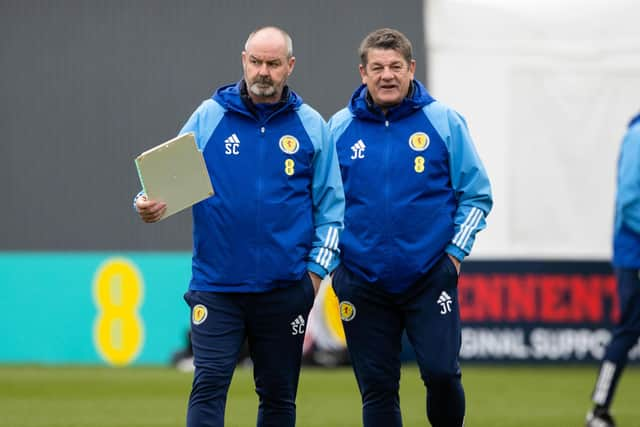Scotland team selection and tactical analysis as a trusted system aims to stop Erling Haaland in Norway
and live on Freeview channel 276
Despite the archetypal Vikings-versus-Bravehearts theme, Saturday’s European Championship qualifier between Norway and Scotland will bring together two intelligent and experienced tacticians. Ståle Solbakken and Steve Clarke have been round the block enough at club and international level to relish a battle of minds.
Norway need a victory in Oslo to ignite their qualifying campaign after defeat in Spain and a draw in Georgia in their opening two ties. They have won only one of their last six fixtures. Scotland, of course, beat Cyprus and Spain at Hampden Park and sit proudly top of Group A on six points. They can afford a draw at the Ullevaal Stadion but won’t set out solely to achieve a point.
Advertisement
Hide AdAdvertisement
Hide AdThe tactical exchanges promise to fascinate. Clarke’s success as Scottish head coach is underpinned by the 59-year-old’s 3-5-2 formation which drew 12 victories from the last 15 competitive internationals. Solbakken, 55, mainly favours a 4-3-3 system in which wide players have licence to roam across the front line or linger out on the touchline. He can also employ a flexible 4-4-2.
Scotland are without Grant Hanley and Che Adams through injury. The Norwich centre-back’s aggression will be missed with the monstrous Erling Haaland in the opposition ranks, whilst Adams’ intelligence and hold-up play would also be extremely useful. However, it is worth noting that March’s 2-0 success against the Spaniards came without the Southampton forward.
Clarke’s team won’t change too much from that memorable night. Angus Gunn is certain to start in goal having yet to concede after two international appearances. Liam Cooper or Jack Hendry are expected to take Hanley’s slot in the centre of the three-man defence, flanked by Ryan Porteous and Kieran Tierney. John Souttar has an outside chance of featuring but remains a slight injury doubt.
Nathan Patterson is pushing for the right wing-back role but Aaron Hickey’s displays against Cyprus and Spain should ensure he prevails, with captain Andy Robertson on the opposite flank. A three-man central midfield of Scott McTominay – the two-goal hero against Spain – Callum McGregor and John McGinn would give Scotland a balance of energy, physicality, passing ability, aggression and goal threat.
Advertisement
Hide AdAdvertisement
Hide AdIn Adams’ absence, Ryan Christie is most likely to support striker Lyndon Dykes. Scotland’s strength over the last year has been consistency and continuity and there is no obvious reason to change a formula which is working well.


Norway present their own dangers and not purely because of Haaland. The Manchester City striker is ably supported by captain Martin Odegaard, who advances into the final third from the right of Solbakken’s three-man midfield. His runs need tracked closely.
Wide players Ola Solbakken – no relation to the coach – and former Celtic player Mohamed Elyounoussi are also partial to a rampage. If their movement is picked up by Hickey and Robertson, Scotland’s three central defenders would remain free to combat Haaland. Yes, it might take three men or more to stop him.
That relies on the Scottish midfield effectively man-marking their Norwegian counterparts when out of possession. With the ball, the visitors must get players forward quickly, with both wing-backs plus McTominay and McGinn likely to spring into attack. It won’t simply be counter-attacking tactics from Clarke, but Scotland know they are the team in the ascendency and playing with confidence.
Comment Guidelines
National World encourages reader discussion on our stories. User feedback, insights and back-and-forth exchanges add a rich layer of context to reporting. Please review our Community Guidelines before commenting.
